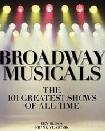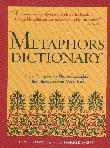SITE GUIDE
SEARCH
REVIEWS
FEATURES
NEWS
Etcetera and
Short Term Listings
LISTINGS
Broadway
Off-Broadway
NYC Restaurants
BOOKS and CDs
OTHER PLACES
Berkshires
London
California
DC
Philadelphia
Elsewhere
QUOTES
On TKTS
PLAYWRIGHTS' ALBUMS
LETTERS TO EDITOR
FILM
LINKS
MISCELLANEOUS
Free Updates
Masthead
Writing for Us
A CurtainUp Review
Belle Epoque
By Brad Bradley
Even before Belle Epoque begins, audience members feel like early arrivals at a proletarian cabaret from the distant past. The club's moveable small circular tables and simple chairs seem of little consequence, while huge aged mirrors at the back wall suggest they may reflect some action of interest. On the club's entrance doors are printed "Absinthe and Vermouth." These signs promoting the availability of exotic alcoholic refreshments themselves signal the decadent and hedonistic prism through which the evening's entire theatrical concoction will be seen.
When the house lights dim, we soon observe a small but intense shard of light on a single small table presenting a bottle of absinthe for an apparently regular customer. A soothing violin plays with abandon, and a piano soon upgrades the mood into bawdier fun. As performers fill the stage, they soon are singing, shouting, and dancing, even with some can-can-inspired skirt flashing. For this arriving motley collection of characters, exaggeration and immodesty are the rule, and music and movement are central to the energy of the free-form concoction that holds them. We seem to be off to a rousing start.
Collaborators Martha Clarke and Charles L. Mee have returned to the same fin-de-siecle time of their earlier project Vienna: Lusthaus to fashion a living portrait of a perhaps even lustier population of decidedly outsider artists, those in Paris slightly more than a full century ago. At the center of their focus is the diminutive painter Henri de Toulouse-Lautrec, a sickly and troubled man who lived a brief life littered with professional and personal risks.
The production has an unmistakably evocative tone and flavor that often wraps the eyes and ears. Music is nearly omnipresent, although arranged largely as background. Joyce Castle's appealing singing voice, and a quartet of fine musicians including their leader, Jill Jaffe, on violin, make this background often compellingly move into our primary focus. With the creators' intended center of attention, Toulouse-Lautrec, alternately a collapsing soul and as a fun-loving dervish, we peer at this peculiar yet enduring unusual artist's world of escape and inspiration.
This work brings to mind Sondheim and Lapine's take on another short-lived French painter of only a few years before, Georges Seurat (Sunday in the Park with George, 1984). That work, although it reflects another desperately passionate and unconventional artist, finds much richer ways to explore creative pain and inspiration, which get only offhand consideration here.
Ms. Clarke and Mr. Mee, in their look at the improper side of Paris at that time, have chosen to emphasize the grotesque and outsider nature of their vitally memorable artist by casting the markedly undersized actor Mark Povinelli; unfortunately, in doing so they fail to supply their actor with either sufficient action or text to fuel much soul or passion for what apparently was the central motivating environment for the achievements of their now celebrated protagonist. After its promising start, their brief Lincoln Center evening has some lovely moments of visual invention and musical nostalgia, but dissipates into an expressionistic and sadly forgettable stew that is mostly innocuous as it flies by, failing to engage on a deeper level.
The bits and pieces of spoken script rarely coalesce into conversation, and at times might even be described as impressionistic; but given my prior invocation of Seurat, perhaps that is a misleading overstatement, for the whole of Belle Epoque is never equal to the sum of the parts, let alone greater than the sum. When we hear, "I like to see a woman when she's not expecting to be seen," we expect this remark to take us somewhere, but it does not. The exchange "Are you an odd sort of person?" / "That's why I am drawn to you." also teases but does not satisfy dramatically. The menagerie of human extremes, from body size and stance to décolletage, and the actions from the plaintive to the erotic and the violent make a busy stage, often bordering on the intriguing, but more often seeming too much out of control.
The final several minutes when Toulouse-Lautrec and two other characters are permitted to portray genuine feelings are a notable exception. A quiet scene with Henri and his mother (Honora Fergusson) is quite touching, and a clown-like mature woman, gustily played by Ruth Malaczeck, offers a speech much like a bittersweet Elizabethan epilogue, bringing an evocative, even painful edge to the briefly poetic text. Both these all-too-short moments put a remarkably sobering and thoughtful finish to a mostly frivolous and superficial show. Unfortunately the painter's apt words, "To take them as they are was a beautiful thing," again reminds us of the absence of feelings beyond such pertinent words. As a far less central figure in the film Moulin Rouge (itself an even more self-indulgent piece of dramatic artistry than Belle Epoque), at least Toulouse-Lautrec was allowed some dimension. Here, unfortunately, he rarely is permitted to be more than an empty caricature.
For a review of the previous Clarke/Mee collaboration which CurtainUp liked very much, see Vienna Lusthaus: Revisited .
| Belle Epoque
Written by Martha Clarke and Charles L. Mee Directed and Choreographed by Martha Clarke Cast:: Vivienne Benesch, Rob Besserer, Joyce Castle, Tomé Cousin, Honora Fergusson, Nina Goldman, Ruth Maleczech, Gabrielle Malone, Mark Povinelli, Michael Stuhlbarg, Paola Styron, Rebecca Wender, Robert Wesinger Set Design: Robert Israel Costume Design: Jane Greenwood Lighting Design: Christopher Akerlind Sound Design: Scott Stauffer Music by Satie, Debussy, Fauré, and s popular music-hall songs of the day Running time: 80 minutes without an intermission Mitzi Newhouse Theatre, Lincoln Center, 150 West 65th Street 212/239-6200 From 10/28/04 to 1/09/05; opening 11/21/04. Tues through Sat @ 8:00PM, Wed & Sat @ 2:00PM, Sun @ 3:00pm -- $70 Reviewed by Brad Bradley based on December 1st performance |

Easy-on-the budget super gift for yourself and your musical loving friends. Tons of gorgeous pictures.

Retold by Tina Packer of Shakespeare & Co.
Click image to buy.
Our Review

6, 500 Comparative Phrases including 800 Shakespearean Metaphors by CurtainUp's editor.
Click image to buy.
Go here for details and larger image.


